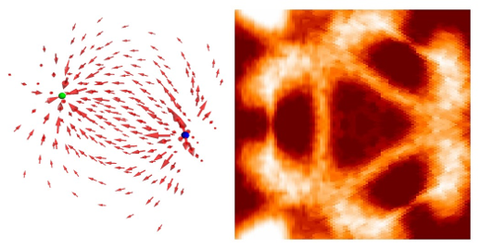19.01.2022
Research: Physicists observe Weyl fermion annihilation
Creating and annihilating particles is at the heart of physics. For example, in the 1930s electron-positron annihilation played a crucial role in the formulation of the Dirac equation of particle physics and the idea of antimatter. Later, in the 1980s, proton-antiproton collisions in particle accelerators allowed the discovery of the W and Z bosons, experimentally establishing electroweak theory. In the 21st century, emergent quasiparticles in quantum crystals are at the frontier of our understanding. For example, Weyl fermions do not exist as fundamental particles in nature, as far as we know. However, they are observed as an emergent particle arising in a collective way from a sea of electrons in a quantum crystal. Analogous to the opposite electrical charge of positrons and electrons, Weyl fermions carry a notion of positive and negative topological “charge”. This hints at the possibility that oppositely charged Weyl fermions can be created and annihilated in a manner analogous to electrons and positrons. In this work, we have observed experimental signatures of Weyl fermion annihilation in a quantum crystal, for the first time. We achieved this result by examining a unique quantum crystal Co3Sn2S2 which not only hosts Weyl fermions but is also a magnet. We found that the magnetism can be used to control the Weyl fermions, allowing us to bring oppositely charged Weyl fermions together in momentum space and annihilate them. In the future, our experiment could be used to investigate exotic phenomena such as non-Abelian Weyl fermion braiding.
I. Belopolski, T. A. Cochran, X. Liu, Z.-J. Cheng, X. P. Yang, Z. Guguchia, S. S. Tsirkin, J.-X. Yin, P. Vir, G. S. Thakur, S. S. Zhang, J. Zhang, K. Kaznatcheev, G. Cheng, G. Chang, D. Multer, N. Shumiya, M. Litskevich, E. Vescovo, T. K. Kim, C. Cacho, N. Yao, C. Felser, T. Neupert, M. Z. Hasan,
Signatures of Weyl Fermion Annihilation in a Correlated Kagome Magnet,
Phys. Rev. Lett. 127, 256403 (2021) (arXiv)

